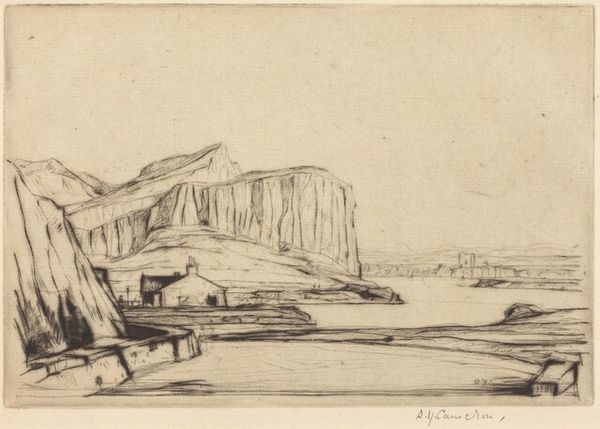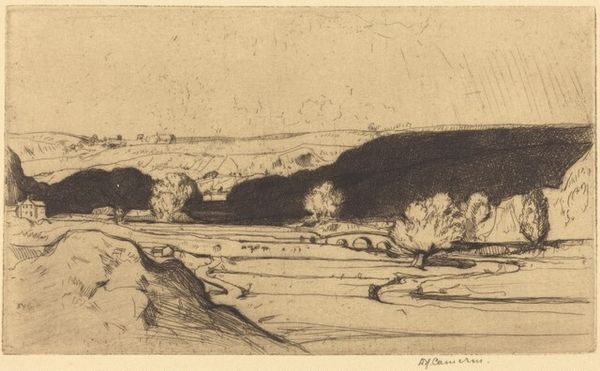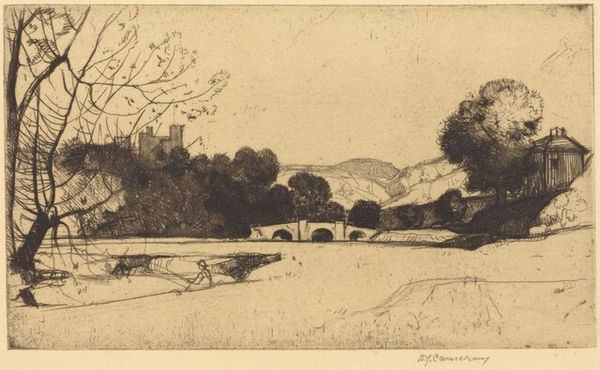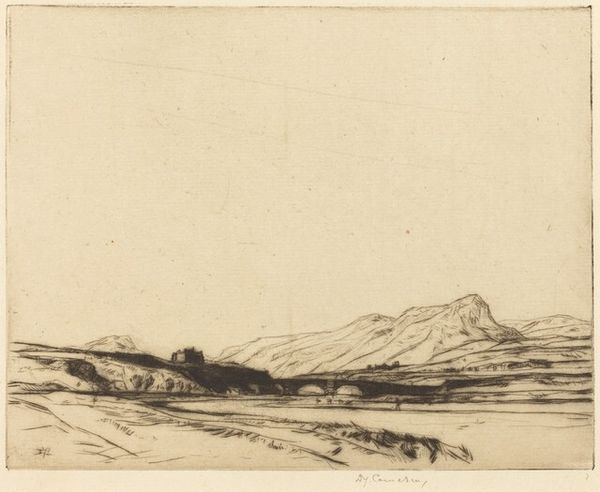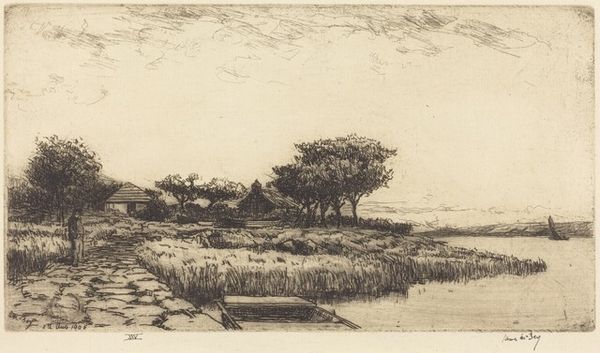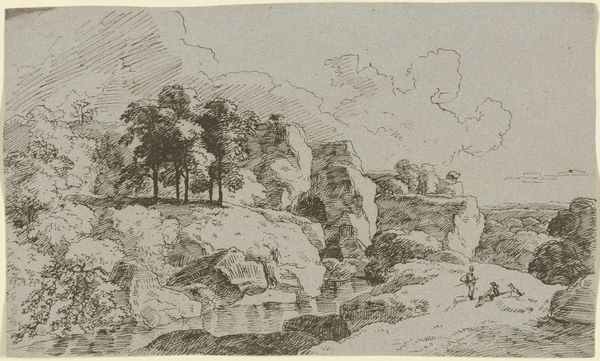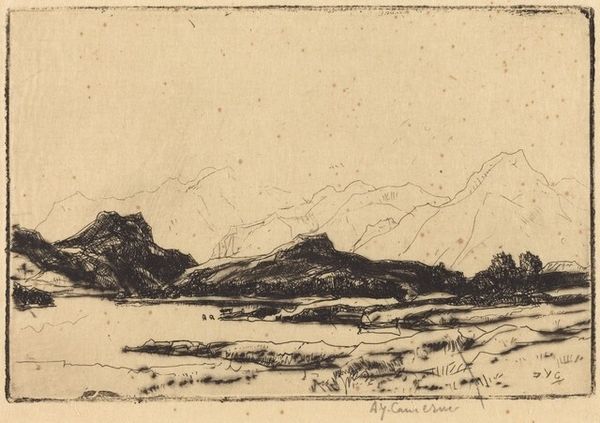
#
amateur sketch
#
toned paper
#
light pencil work
# print
#
pen sketch
#
pencil sketch
#
incomplete sketchy
#
personal sketchbook
#
ink drawing experimentation
#
pen-ink sketch
#
sketchbook drawing
Copyright: National Gallery of Art: CC0 1.0
Editor: Okay, next up is "Dunvalanree," a 1910 print by David Young Cameron. It's a detailed landscape, but something about the stark lines and empty space creates a feeling of isolation. What stands out to you when you look at it? Curator: The setting itself becomes a critical element, doesn't it? Etchings like these, widely distributed and relatively affordable, helped to cultivate a specific image of the Scottish landscape. The picturesque, previously the domain of wealthy patrons commissioning landscape paintings, became available to a broader public through print media. Editor: So, it’s almost like a democratizing force? Curator: Exactly! This etching participates in constructing and disseminating a vision of Scotland. Cameron chooses a specific view, highlighting the dramatic cliffs but also including the suggestion of human presence, linking the untamed landscape to a cultural identity. What do you notice about how he portrays that human element? Editor: Well, they seem pretty small against the grand landscape, kind of dwarfed by nature, which maybe emphasizes its power and timelessness? Curator: Precisely! It invites us to consider whose story this landscape is telling. Is it a story of human domination or coexistence? Is it celebrating the ruggedness of the Scottish landscape or inviting tourism? These images circulated in a specific historical moment, carrying socio-political weight. Editor: I hadn't thought about landscape art as a political statement. It’s interesting to think how images shape our perception and understanding of a place, even now. Curator: Indeed, understanding that dynamic between art and society helps us see how these images operate as more than just pretty pictures. They’re actively constructing meaning.
Comments
No comments
Be the first to comment and join the conversation on the ultimate creative platform.
